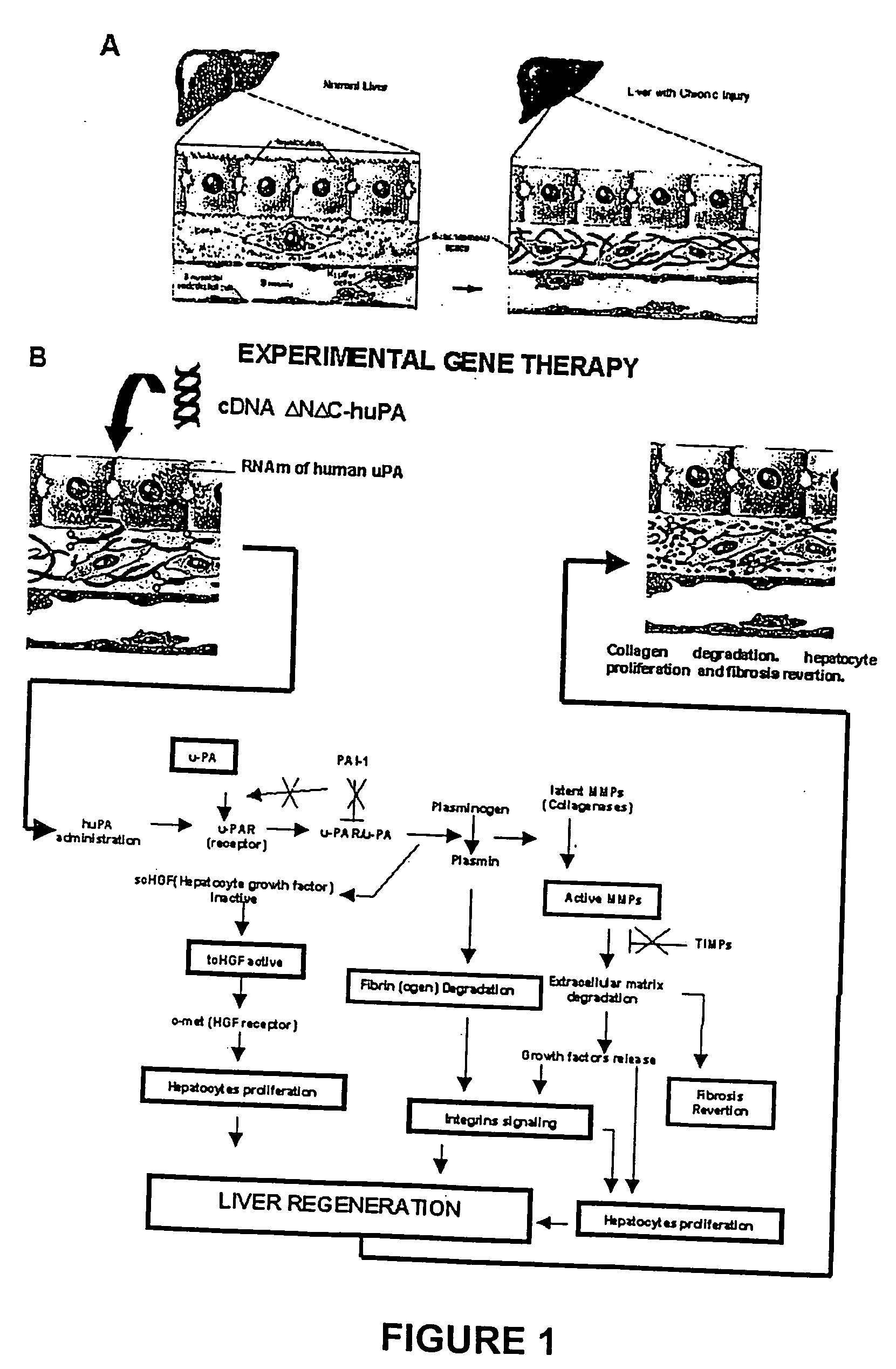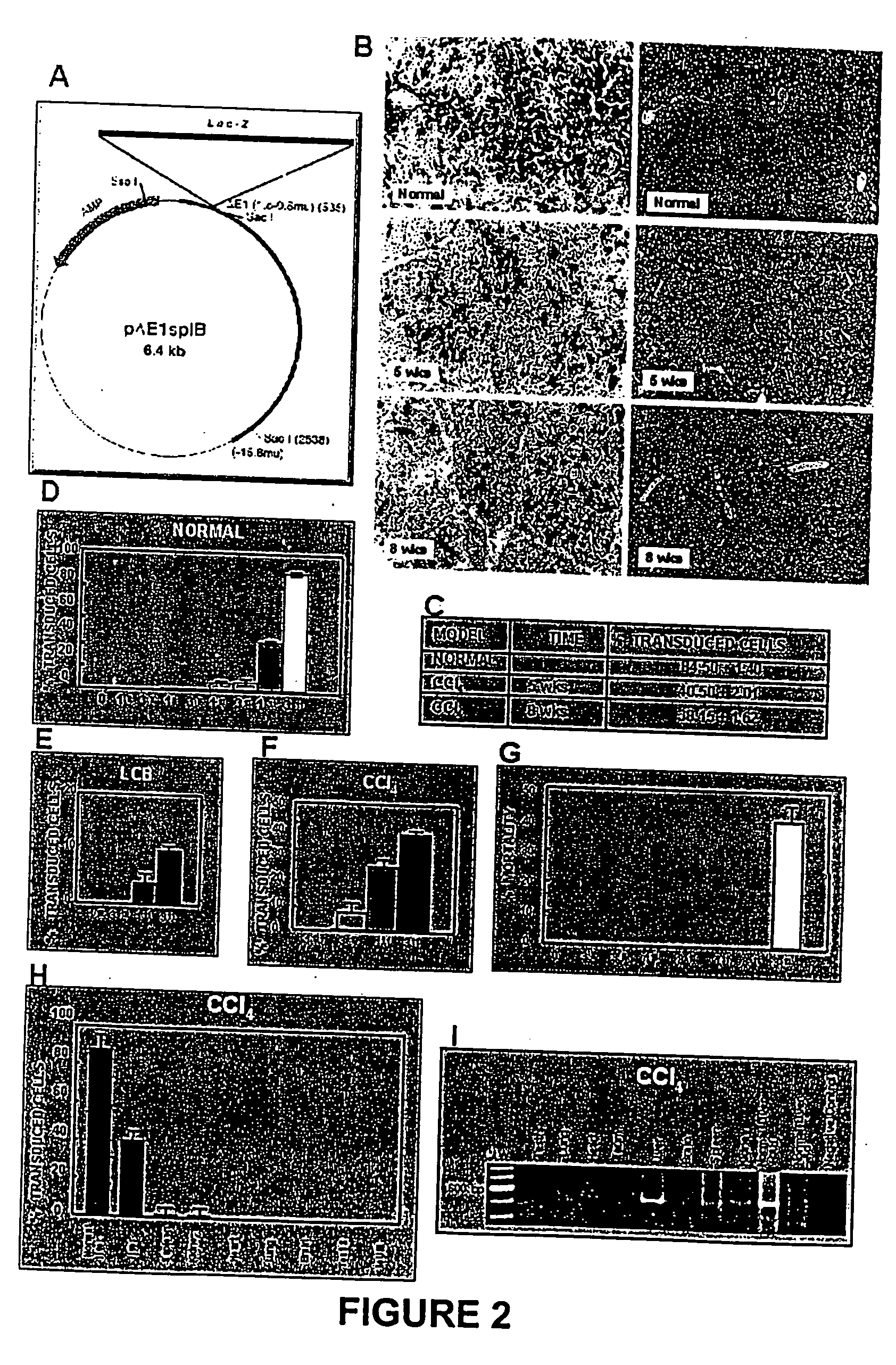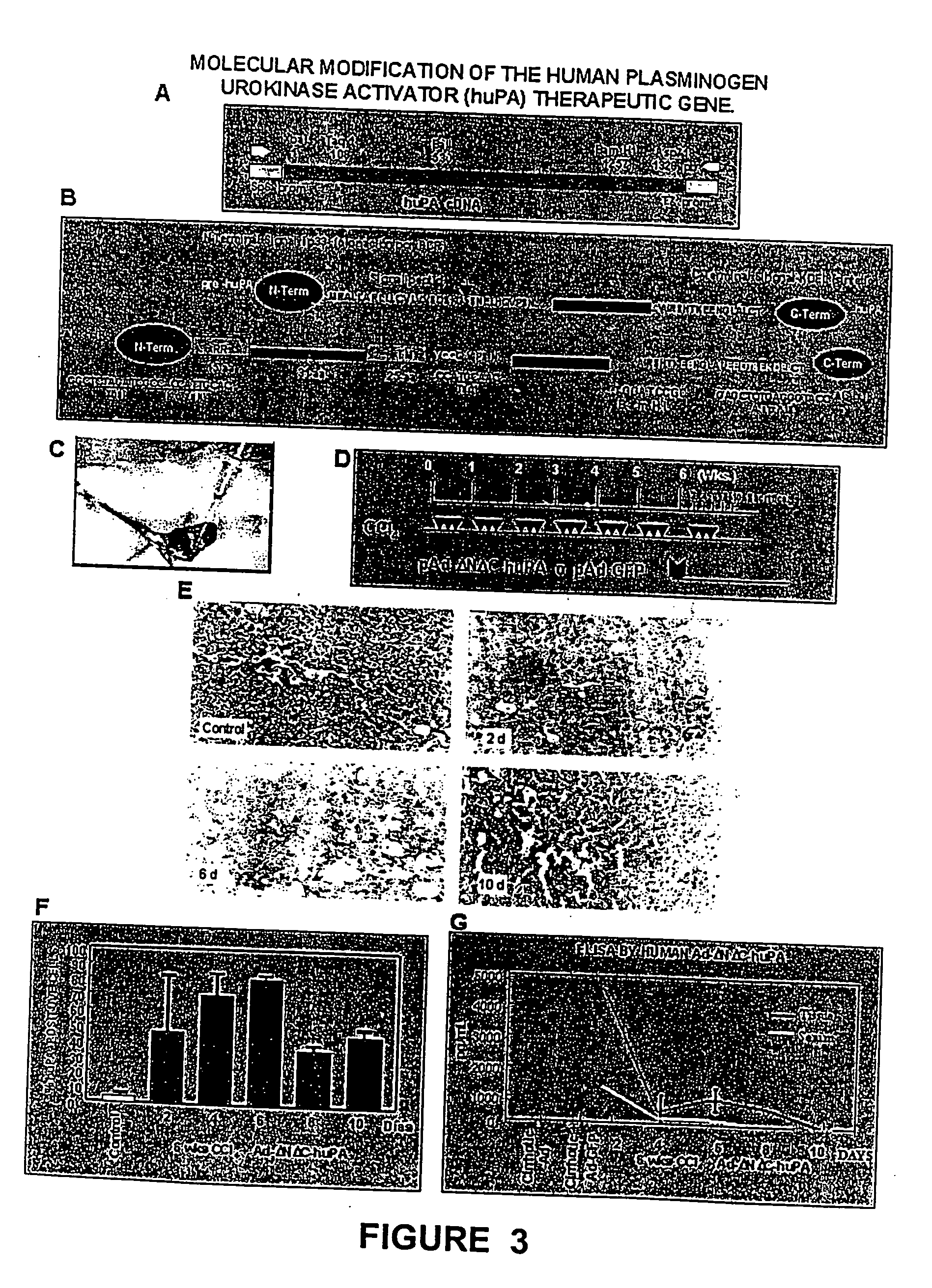Recombinant viral and non-viral vectors containing the human urokinase plasminogen activator gene and its utilization in the treatment of various types of hepatic, pulmonary, pancreatic and cardiac fibrosis and hypertrophic scars
a technology of human urokinase and activator gene, which is applied in the field of recombinant viral and non-viral vectors, can solve the problems of no definite available treatment, hepatic cirrhosis is considered a serious health problem, and hepatic cirrhosis is also a cause of death in children, and achieves the effect of restoring liver function in cirrhosis animals
- Summary
- Abstract
- Description
- Claims
- Application Information
AI Technical Summary
Benefits of technology
Problems solved by technology
Method used
Image
Examples
Embodiment Construction
Methodology to Demonstrate huPA Activity on Fibrosis Reversion and Liver Regeneration Stimulation
[0063] a) Experiment Animals Mimicking Human Liver Cirrhosis
[0064] The model consisted of animals submitted to CCl.sub.4 chronic intoxication (Armendriz-Borunda, J. Seyes, J. M., Kang, A. H. and Ranghow, R. Regulation of TGF gene expression in rat liver intoxicated with carbon tetrachloride. FASEB J. 1990:4:215-221) in which liver cirrhosis is established since the sixth week of CCl.sub.4 intraperitoneal administration (FIG. 3D) and that resembles human liver cirrhosis induced by alcohol abuse or chronic hepatitis C virus infection. Animals weighting 80 g received 3 intraperitoneal weekly doses of CCL.sub.4-mineral oil mixture 1:6 during the first week, 1:5 during the second week, 1:4 during the third week and 1:3 during the weeks four to eight. Rats were paired to be used as control injecting them similarly only with the carrier. All the experimental methods have been previously describ...
PUM
| Property | Measurement | Unit |
|---|---|---|
| pH | aaaaa | aaaaa |
| mass | aaaaa | aaaaa |
| functional mass | aaaaa | aaaaa |
Abstract
Description
Claims
Application Information
 Login to View More
Login to View More - R&D
- Intellectual Property
- Life Sciences
- Materials
- Tech Scout
- Unparalleled Data Quality
- Higher Quality Content
- 60% Fewer Hallucinations
Browse by: Latest US Patents, China's latest patents, Technical Efficacy Thesaurus, Application Domain, Technology Topic, Popular Technical Reports.
© 2025 PatSnap. All rights reserved.Legal|Privacy policy|Modern Slavery Act Transparency Statement|Sitemap|About US| Contact US: help@patsnap.com



